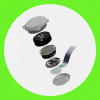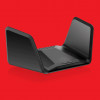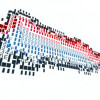MIT Researchers Develop Tech for New Generation of Airport Scanners
Airport security is a huge objective in the United States these days. Airports in America and around the world are beefing up security and researchers scattered around the globe are working hard at developing scanners and detectors that are better at finding potential weapons and explosives that people may try to get onboard aircraft.
New scanner technology that was shown off first in May of 2009 dubbed "whole-body imaging" scanners had passengers and privacy advocates up in arms over the fact that the scanners were able to see through clothing and show anatomical details of passengers. The scanners are deployed at 40 airports at a cost of about $170,000 each. The scanners blur the face of the person being scanned and only the scanner operator sees the scans.
Researchers at MIT have developed a new technology that may one day allow scanners in airports to tell if the substance inside a medication vial is an illegal drug or an explosive. The technology uses lasers with a frequency in the terahertz spectrum. Lasers operating in the terahertz range are absorbed by different molecules in different amounts allowing scanners using the lasers to tell the difference between chemicals.









































































